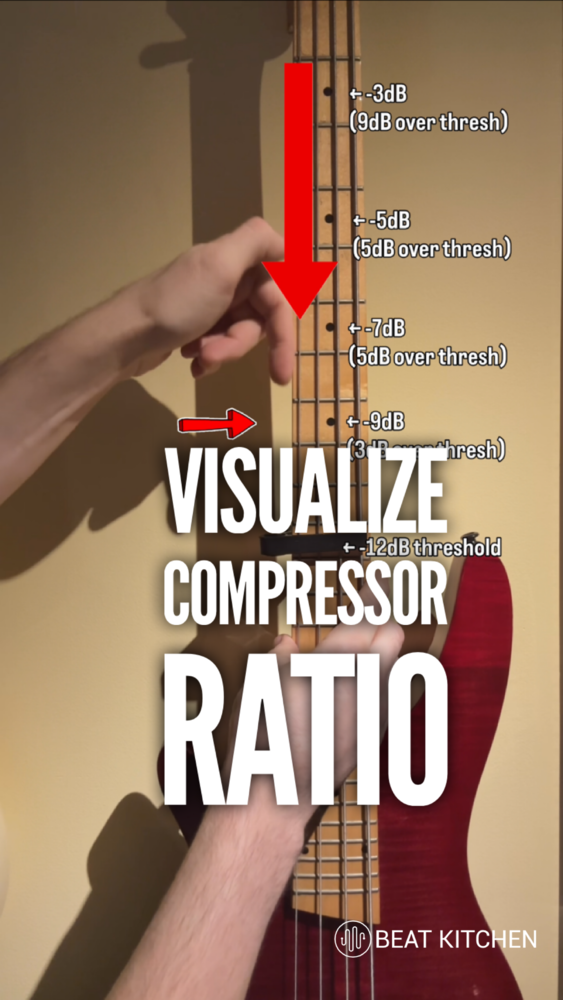Okay, let’s talk about compressor ratio and let’s imagine that instead of pitch, this is level. Now, let’s say we took our compressor and we set a threshold at 12 dB. Now imagine if you will that each one of these frets is 1 dB over the threshold.
3 dB, 5 dB, 7 dB, 9 dB. With a ratio of 3 to 1, the compressor is going to turn it down by 2 dB. It will only be 1 dB over the threshold.
At 5 to 1, 1 dB. Or at 7 to 1, a note of this level will be turned down 1, 2, 3, 4, 5, 6 dB. Your takeaway here is that below the threshold, nothing’s happening.
And above the threshold, the higher the ratio, the more it’s being pushed towards the limit of this threshold. A low ratio will do very little, whereas a higher and higher ratio will increasingly push the output of the compressor closer and closer to this threshold. So to answer the question of 4 to 1 ratio when 12 dB over the threshold, 1, 2, 3, 4, 1, 2, 3, 4, 1, 2, 3, 4, will result in 3 dB over the threshold or 9 dB of gain reduction.
Hope that helps.

